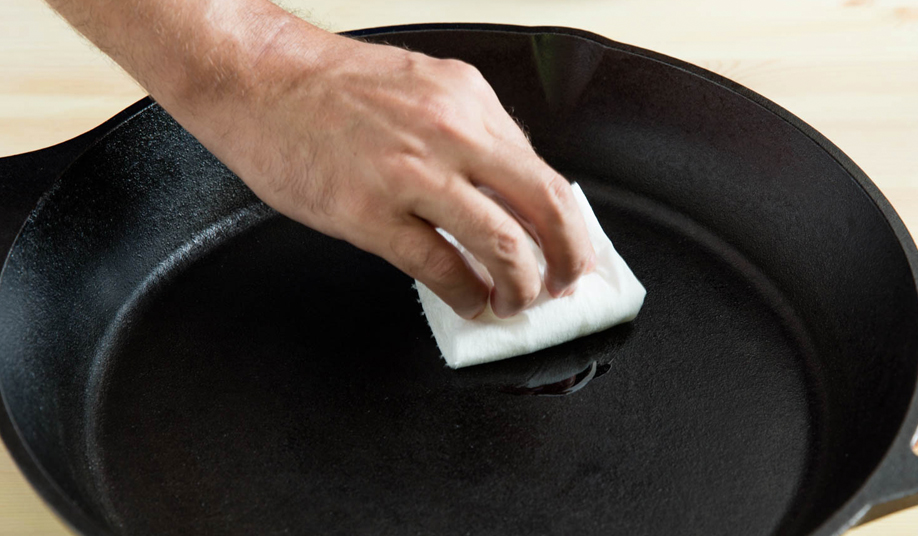GUIDE: COOKING WITH A CAST IRON SKILLET Up Your Kitchen Game
A lot of men’s interest websites go on and on about the glories of cast iron skillets. And as someone who finally bought a cast iron skillet and used it for the past year, I can fully attest to their greatness.
If you don’t know, cast iron skillets are beloved for their durability and the flavor that comes from the non-stick buildup known as seasoning. Cast iron skillets can cook everything from steaks to vegetables to apple pies, and if maintained they’ll last long enough to pass on to your grandkids. Go buy one for yourself and read here all about how to care for your new beloved skillet.

Seasoning Your Skillet
Most cast iron skillets will come “pre-seasoned” simply as a way of shipping them. You’ll want to season your skillet regardless of how it comes, so if it did come pre-seasoned, use warm water, steel wool, and a very mild dish soap to scrub it down to its base layer. Then thoroughly dry the entire skillet with a towel and get some cooking oil. Flaxseed oil will give you the longest lasting and best non-stick surface, however it tends to be a little pricey. You can also use canola oil, vegetable oil, or even melted shortening.
Pour a few tiny drops of oil into the pan and spread it around with a paper towel. Be sure to work it in for a while to let the oil absorb into the pan. Then heat up the oven as high as it will go (honestly anywhere between 400 and 500 degrees will do), since the greater heat will help foster the chemical processes involved with creating the desired non-stick surface. Stick the skillet in the oven upside down and leave it there for an hour. You may want to set a pan or baking sheet on the lower baking tray to pick up any oil droplets that drip off during the process. After the hour is up, turn off the heat and let the pan cool in the oven.
Some experts recommend performing this entire process twice for a new skillet, but either way you’ll want to make sure to repeat the process every six months or so.

Cooking With Your Skillet
Rule #1: Never start cold. Putting something onto your skillet and then heating it up will only make for a sticky mess you’ll have to work hard to clean up later.
Rule #2: Heat your skillet gradually. Cast iron is a crude and fickle (but lovely) beast and as such it tends to heat up unevenly. Start at a low to medium heat while you’re chopping or preparing your other foods, then come back to it after 5-10 minutes and turn it up to your desired level. One thing about cast iron is that it takes a while to heat up, but once it does, it can get really hot. I usually hold my open hand above the skillet to test when it’s hot enough to add my food. Once it is, add a little cooking oil or animal fat and you’re ready to do whatever you need.
Just so you know, you can use your cast iron skillet on the stovetop or in the oven. My girlfriend’s go-to chicken recipe involves searing the chicken breast on the stovetop and then putting the whole apparatus into the oven to finish the job. It’s lovely.

Cleaning Your Skillet
There are a number of myths about how to clean your cast iron skillet. The general rule is not to use soap since you don’t want to erode that tender seasoning you’ve worked so hard to get. Take your dirty skillet to the sink ideally when the skillet is still a little warm and rinse it out with water. If you’ve got a lot of gunk that’s hardened into the pan, add salt which will act as a good abrasive agent, and use a non-metal brush to scrub it around. If you need to, you can use a very light dish soap here, but if you can, I’d advise staying away from it. Be sure to dry the skillet completely and spread around a tiny drop of oil with a paper towel before storing it away.






